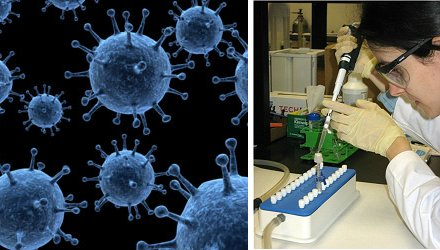Other Clean Water Act Test Methods: Microbiological
Not Approved Under 40 CFR Part 136

In addition to developing and approving methods for use in compliance monitoring, the EPA may develop methods to support studies of specific industries (e.g., the Effluent Guidelines program) or for use in broad national surveys. If such studies or surveys lead to regulatory limits of new contaminants, the EPA approves the applicable methods for nationwide or industry-specific use through rulemaking which includes an opportunity for public comment.
Microbial Source Tracking Methods
Methods 1696.1 and 1697.2 are used for microbial source tracking (MST) to characterize human sources of fecal pollution in recreational waters. These methods can be used to identify trends and provide additional information to support water quality management that can potentially improve public health and water quality.
Methods 1696.1 and 1697.2 include an update to the optical density at 260 nm (OD260) example calculation in Section 7.18 (Salmon DNA Extraction Buffer) to 33 µg/mL from the original versions of these methods. It should also be noted that the automated data analysis tool has been updated to allow for the use of commercially available DNA standards.
- 1696.1: Characterization of Human Fecal Pollution in Water by HF183/BacR287 TaqMan® Quantitative Polymerase Chain Reaction (qPCR) Assay® (pdf)
-
1697.2: Characterization of Human Fecal Pollution in Water by HumM2 TaqMan® Quantitative Polymerase Chain Reaction (qPCR) Assay® (pdf)
-
Automated data analysis tool for EPA Methods 1696.1 and 1697.2 (xltm)
Upon completion of data entry, this tool will automatically perform all calculations for method proficiency, quality assurance and estimation of human-associated genetic marker concentration in test samples. Note: Save the file to your computer and then open the file in Excel. The file is not viewable with web browsers.
-
Automated data analysis tool for EPA Methods 1696.1 and 1697.2 (xltm)
Other Microbiological Methods
- 1696: Characterization of Human Fecal Pollution in Water by HF183/BacR287 TaqMan® Quantitative Polymerase Chain Reaction (qPCR) Assay (pdf)
- 1697: Characterization of Human Fecal Pollution in Water by HumM2 TaqMan® Quantitative Polymerase Chain Reaction (qPCR) Assay (pdf)
Methods 1642, 1643
- 1642: Male-specific (F+) and Somatic Coliphage in Recreational Waters and Wastewater by Ultrafiltration (UF) and Single Agar Layer (SAL) Procedure (Draft) (pdf)
- 1643: Male-specific (F+) and Somatic Coliphage in Secondary (No Disinfection) Wastewater by the Single Agar Layer (SAL) Procedure (Draft) (pdf)
Methods 1609, 1611
- Errata to Methods 1609.1 and 1611.1 (pdf)
- 1609: Enterococci in Water by TaqMan® Quantitative Polymerase Chain Reaction (qPCR) with Internal Amplification Control (IAC) Assay (pdf)
- 1609.1: Enterococci in Water by TaqMan® Quantitative Polymerase Chain Reaction (qPCR) with Internal Amplification Control (IAC) Assay (pdf)
- 1611: Enterococci in Water by TaqMan® Quantitative Polymerase Chain Reaction (qPCR) Assay (pdf)
-
1611.1: Enterococci in Water by TaqMan® Quantitative Polymerase Chain Reaction (qPCR) (pdf)
-
Methods 1609.1 & 1611.1 Calculation Spreadsheet (xlsx)
Note: This spreadsheet is completely unlocked, which allows you to edit it. Use extreme caution in changing any of the existing calculation formulas. - Method 1609 Calculation Spreadsheet (xlsx)
- Method 1611 Calculation Spreadsheet (xlsx)
-
Methods 1609.1 & 1611.1 Calculation Spreadsheet (xlsx)
- Method B: Bacteroidales in Water by TaqMan® Quantitative Polymerase Chain Reaction (qPCR) Assay (pdf)
qPCR Support Documents
- Acceptability of the EPA qPCR Test at Your Beach (pdf)
- Detection and Quantification Limits of EPA Enterococcus qPCR Methods (pdf)
Methods 1601, 1602, 1605, 1693
- 1601: Male-specific (F+) and Somatic Coliphage in Water by Two-step Enrichment Procedure (pdf)
- 1602: Male-specific (F+) and Somatic Coliphage in Water by Single Agar Layer (SAL) Procedure (pdf)
- 1605: Aeromonas in Finished Water by Membrane Filtration using Ampicillin-Dextrin Agar with Vancomycin (ADA-V) (pdf)
- 1693: Cryptosporidium and Giardia in Disinfected Wastewater by Concentration/IMS/IFA (pdf)
